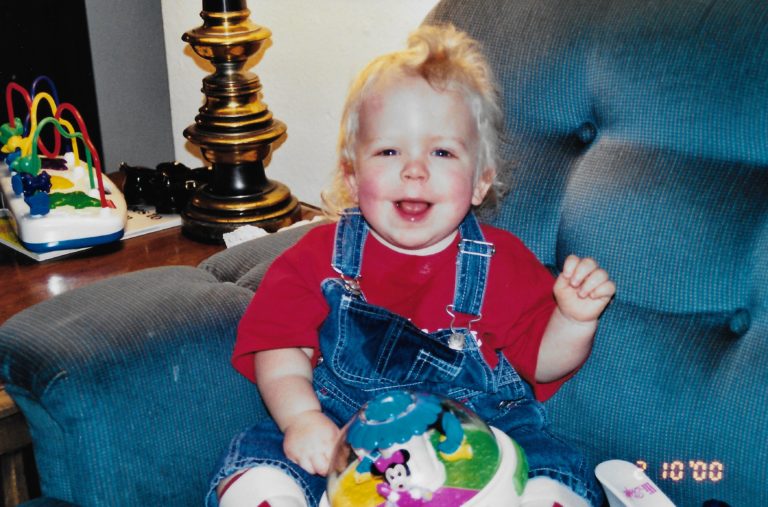This month’s Conversations is with Angela. Angela and I met in the summer of 2019. Both of us were part of the Welcome Committee of our neighborhood and there was an informal gathering of all the team members.
Somehow in the course of our conversation, we discovered both of us had sons with disabilities. She shared a little about her son. I wanted to hear more but this was a Welcome Committee event, not a social gathering. So I couldn’t explore her story any further. But I left intrigued, wanting to know more. Unfortunately, a global pandemic put all future social gatherings on hold.
But as I was brainstorming possible people to talk to for Conversations, I remembered Angela and thought she would be a great person to interview. But I wasn’t sure how to contact her. Well, as it turns out, I’m friends with her cousin (who is also head of the Welcome Committee). The rest, as they say, is history.
Angela and I meet twice. Once via the phone. Where I frantically tried to scribble down everything she was saying. Turns out, I can’t transcribe fast enough and neither do I know short-hand. I was able to record a portion of our call before my phone hung up.
Thankfully, we were able to meet in person. So on a nice summer day, Angela and I met in her backyard and over the sound of a lawn mower and chirping insects, Angela shared her story.
Angela’s story
Angela’s story starts out in Dallas where she and her husband, Byron have been living for the past six years. They both work for Sprint and have two children, a two-year-old daughter named Olivia, and a little baby boy whom they named Davis.
Davis was born 4 weeks early weighing 8lbs 6oz. There were no concerns at birth and he was a healthy weight. However, when he was placed in Angela’s arms shortly after birth, she noticed a circular striped patch of skin on Davis’s side. But they hadn’t cleaned him up yet and Angela didn’t think much of it.
Instead, they celebrated and welcomed the newest member of their family and wondered what his future would be like. There were hopes he would be athletic like his father and play sports. Perhaps he would even go to OSU (Oklahoma State University) like his parents. No one knew for sure. But his future was filled with possibilities.
These were just some of the dreams that crossed Angela and Byron’s minds as they held their baby boy for the first time. And for several months, they watched their dreams and their baby boy grow.
But then the unexpected happened in the most ordinary, nondescript, run-of-the-mill places, and along with it began the loss of some of their dreams.
Just another Target run
It was just a routine trip to Target. One I’m sure they’ve made many times before. There was nothing extraordinary about it. It was Angela, Byron, and their two kids, 2-year-old Olivia and 5-months-old Davis. Just a typical family of four doing some shopping.
It was while looking at toys the ordinary day quickly took an abrupt turn. Davis suddenly looked like he was choking. Byron took Olivia and immediately went to find a phone to call 911. These were the days before everyone had cell phones. Meanwhile, Angela and Davis rushed to the front of the store to wait for the paramedics.
By the time ambulance arrived, Davis seemed to have recovered from whatever trauma he was experiencing. But based on Angela’s description of the incident, the paramedics suspected Davis may have had a febrile seizure. One of the most common types of seizures seen in babies.
Angela apprised her pediatrician of the situation and was advised to go to the ER if Davis had another seizure.
Unfortunately, around midnight Davis had another episode. So with no forewarning, no preparations, and no instruction manual, Angela and Byron found themselves face to face with the unexpected.
Davis’ diagnosis
Over the next few months, Davis was seen by a neurologist and a geneticist. It was the geneticist who suspected Davis may have a condition called hypomelanosis of Ito (HMI). It is a rare condition and according to Rarediseases.org it affects 1 in every 8,000 to 10,000 individuals. It’s generally characterized by areas of hypopigmented skin in whirly patterns. The same whirly pattern Angela had noticed on Davis at birth. But unless you’re a geneticist looking for a disorder, those little curiosities generally go undetected.
In addition to areas of skin discoloration, HMI can also be a neurocutaneous condition and can have neurological symptoms like seizures. HMI can also cause cognitive delays, skeletal abnormalities, sometimes eye problems, heart abnormalities, and even deafness.

HMI is caused by chromosomal mosaicism and sporadic gene mutation. Basically, it means the affected individual has two different sets of genes in their body. They have cells containing the normal 46 chromosomes and cells containing something different.
Not all individuals with HMI are impacted the same way. Some may only skin issues while others have more severe symptoms. Since Davis was a baby, it was hard to determine where on the spectrum he fell.
A change of plans
In addition to being uncertain about Davis’ future, Angela and Byron also had their little girl to think about. As a result, they found themselves contemplating their future and the practicality of continuing to live in Dallas, far away from their family.
As far as their jobs were concerned, Sprint (T-Mobile as of 2020) was willing to work with them to make their jobs fully remote. Although it seems so simple now (especially post-pandemic), back in the late 90s it involved a lot of equipment and technology, particularly considering high-speed internet (broadband) wasn’t available just yet.
So after living six years in Dallas, Angela, Byron, Olivia, and 11-month-old Davis moved back to Oklahoma, to be closer to family.
